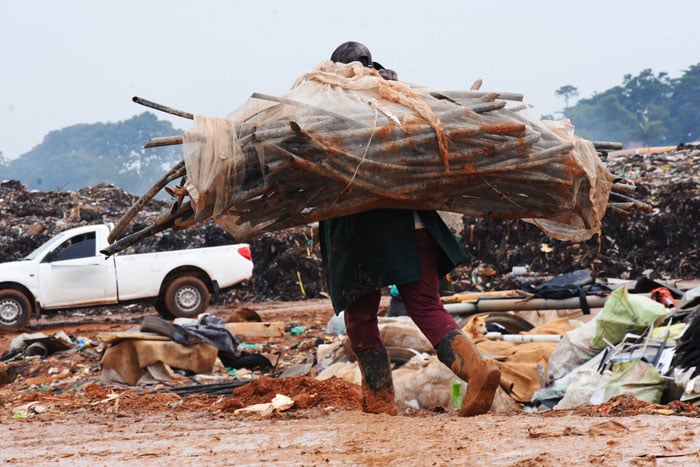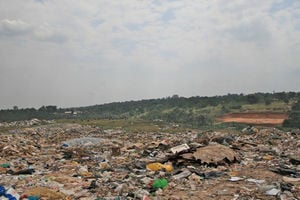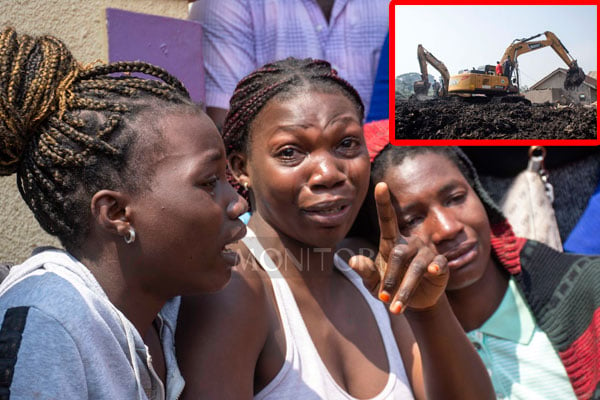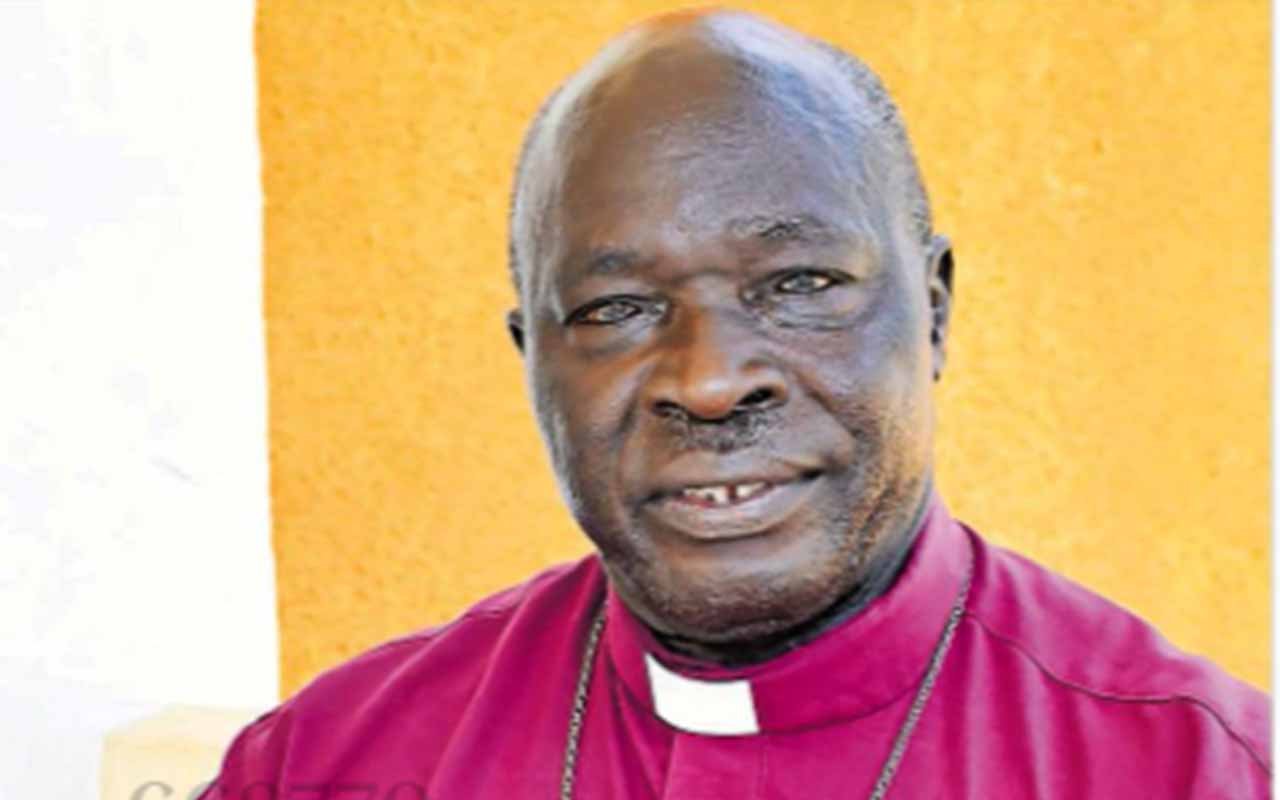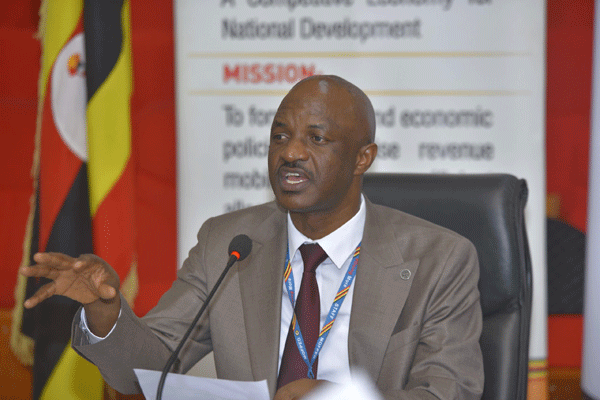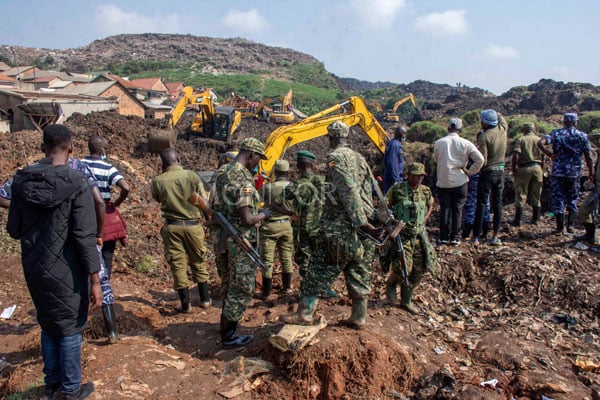
Security officials look on as excavators dig through the rubbles at Kiteezi landfill in Kiteezi, Wakiso on August 11, 2024. PHOTO/ ISAAC KASAMANI
Police last evening confirmed 21bodies had been retrieved, 14 victims rescued and properties worth millions lost following the collapse of the Kiteezi landfill.
But the landfill in Kiteezi, Kasangati Town Council, Wakiso District, was a disaster waiting to happen, based on unmet promises by Kampala City authorities, and warnings from several reports.
In 2008, a World Bank report indicated that the Kampala Capital City Authority (KCCA) landfill, was not being managed in line with environmental best practices.
It is this landfill that, after 16 years, collapsed on Saturday.
Unmet promises
Kampala City Council (KCC), the forerunner of KCCA, opened the Kiteezi landfill, which sits on 32 acres of land, in 1996.
The authorities then said this would be Uganda’s only sanitary-engineered landfill, an area where minerals and chemicals from most parts of the city would be processed.
Monitor in 2018, reported that KCC officials during preparations to open the landfill in 1996, promised to construct a health centre for the populations in Mpererwe and neighbouring Nangabo Sub-county, tarmac the Mpererwe-Kiteezi road and extend safe piped water to the area.
The city authorities promised that processing the water would include setting up a factory that would turn most of the organic wastes into fertilisers. It was also expected that some of the garbage would be used to generate electricity to be sold to the national grid.
Until its collapse on Saturday, none of the 1996 promises by the city authorities had been fulfilled.
But KCCA in 2015 bought 135 acres of land in Dundu Village, Mukono District, and planned to establish a modern garbage dumpsite within three years, but it has never been done to date.
About landfills
Although the United States Environmental Protection Agency (US-EPA) defined a modern landfill as well-engineered and managed facilities for the disposal of solid waste, the description of the Kiteezi landfill by the World Bank report shows the field was more of a garbage collection centre.
US-EPA notes that landfills are located, designed, operated and monitored to ensure compliance with regulations. They are also designed to protect the environment from contaminants, which may be present in the waste stream.
Unheeded warnings
The 2008 World Bank Environmental Impact Assessment Report on the then proposed Landfill Gas Flaring CDM [clean development mechanism] project at Kiteezi indicated that supervision of transported waste quality regularly at the landfill was difficult to achieve by then.
The report also noted the residents’ complaints about air pollution, odour, and noise from the landfill.
The report indicated that the storm water and leachate drains are not clearly demarcated on the ground although some of the maps have shown their existence beneath and around the landfill site.
“During rains, leachate and storm water mix and increase load on the treatment system and thereby reduce the efficiency of the treatment process,” read part of the report.
Kiteezi landfill, which has been operating more as a garbage collection centre, was consuming about 1,300 tonnes, according to a research paper, titled, Characterisation of municipal waste in Kampala, Uganda.
The paper was written by Allan John Komakech and Noble Banadda of Makerere University; Joel Kinobe, Girma Gebresenbet and Björn Vinnerås of the Swedish University of Agricultural Sciences, and Levi Kasisira and Cecilia Sundberg of the Royal Institute of Technology, and published in the Journal of the Air and Waste Management Association.
In March 2015, students of Makerere University Department of Architecture and Physical Planning hosted a team of KCCA officials and unveiled to them findings from different studies on the landfill.
KCCA responds
The Kampala Lord Mayor Erias Lukwago during a visit to Kitezi on Saturday blamed the government for failure to invest in an alternative 135-hectare landfill lying idle in Ddundu, Mukono District.
“In line with Solid Waste Management Ordinance, 2000, we are developing a policy to manage solid waste in Kampala amid the current hazards created by the poor management of Kiteezi landfill,” Lukwago said.
Mr David Luyimbazi, the deputy executive Director of KCCA, said they were aware the Kiteezi landfill had reached its maximum capacity but could not relocate it due to limited funding.
“We want to leave this place for Dundu, but need more than Shs6b to decommission this place and open a new dumping site in Mukono, but we don’t have the money,” he said.
He said KCCA planned to close Kiteezi landfill in 2016, but financial constraints have paralysed their efforts, allowing the hazardous situation to persist.
